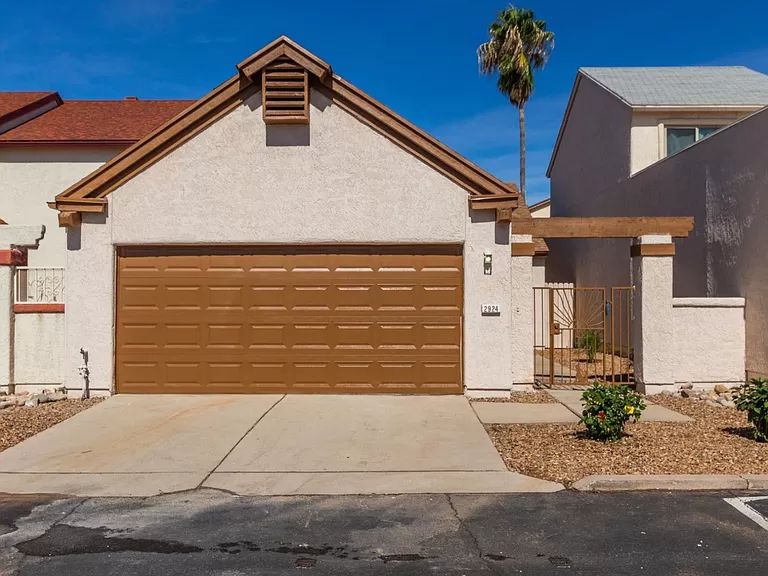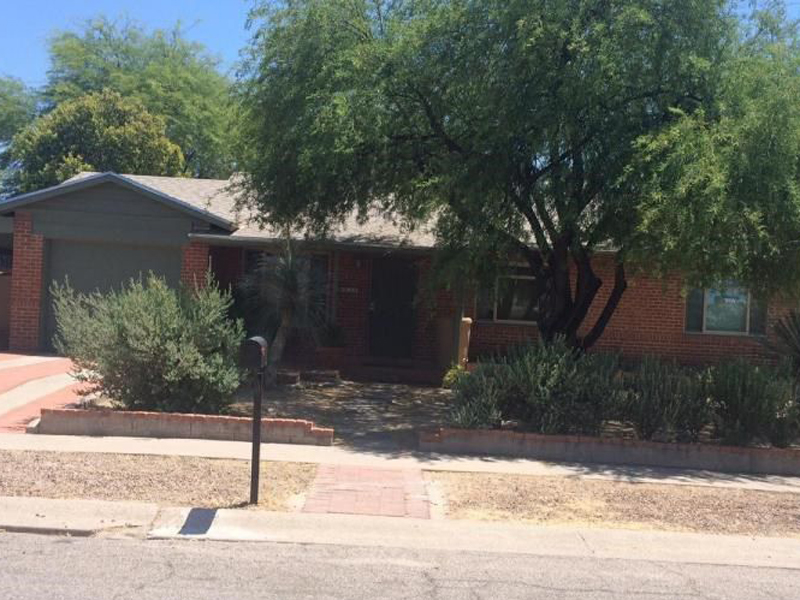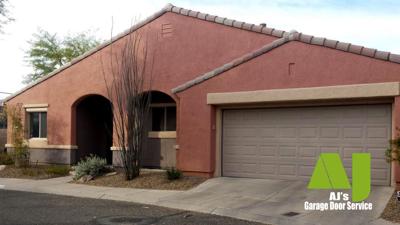Is Your Garage Door Stuck? Below's What to Do Very first
When your garage door won't open, start with these important security checks prior to attempting any kind of fixings. Initially, guarantee nobody is standing near the door which automobiles are free from the opening. Search for noticeable indicators of damages like busted panels, bent tracks, or hanging cords. If you see a snapped spring or significantly harmed parts, quit quickly and call a specialist—-- these repair work need specialized tools and expertise to deal with securely.

Check These 6 Things Before Calling an Expert
Prior to thinking you require costly repair services, run through this quick diagnostic list that solves most garage door problems:
-
Source of power: Verify the opener is connected in and the outlet is working
-
Remote batteries: Replace dead batteries in your push-button control
-
Hand-operated lock: Inspect if somebody accidentally involved the hand-operated lock
-
Obstructions: Look for particles blocking the door's path or sensors
-
Emergency situation release: Make sure the red emergency cable hasn't been pulled
-
Circuit breaker: Validate the garage circuit hasn't stumbled
These easy checks deal with approximately 70% of garage door problems without calling for expert intervention.
10 Common Reasons Your Garage Door Will Not Open
Recognizing why your garage door opener isn't functioning helps you pick the ideal solution. Here are one of the most regular causes property owners encounter:
Dead remote batteries stand for the most basic solution—-- when batteries pass away, the remote can not send out signals to the opener. Power outages or stumbled breakers cut electricity to the electric motor. Busted springtimes prevent the door from raising correctly and call for instant professional attention. Sensor imbalance reasons safety systems to block door procedure. Track obstructions quit rollers from relocating efficiently. Motor overload triggers automated shutoffs when the opener discovers resistance. Limitation switch issues perplex the opener about door placement. Cord damage interferes with the training system. Weather-related issues affect door motion throughout severe temperature levels. Element wear from age progressively lowers system efficiency.
Trouble # 1: Dead Remote Control Batteries
When your wall surface switch works but your remote doesn't, dead batteries are usually the perpetrator. Most garage door remotes make use of either 3-volt lithium or 12-volt alkaline batteries. Get rid of the back cover of your remote and check the battery type. Replace with fresh batteries and check the remote. If it still does not function, you might need to reprogram it to your opener. Consult your opener's handbook for details reprogramming guidelines, as the procedure varies by maker.
Trouble # 2: Power Supply Issues
Garage door power troubles commonly stem from loosened links or stumbled circuits. Inspect that the opener is securely linked into its outlet—-- resonance can loosen up connections with time. Check the electrical outlet with another tool to validate it's functioning. Examine your home's breaker box for tripped circuits, especially if you have actually experienced storms or power variations. GFCI outlets may have tripped and require resetting. If the opener has power however won't respond, the issue likely lies elsewhere in the system.
Problem # 3: Broken or Damaged Springs
Broken garage door springs are amongst the most harmful elements to deal with. If you listen to a loud bang from your garage or see the door really feels incredibly heavy when attempting to raise manually, a springtime has actually likely broken. Torsion springtimes run flat over the door, while extension springtimes rest on either side. Never try spring repairs yourself—-- these parts save significant stress that can create severe injury or fatality. Specialist replacement typically sets you back $150-$300 however guarantees your security.
Trouble # 4: Blocked Security Sensors
Modern garage doors include safety sensing units that protect against closure when items are spotted. These sensing units can stop the door from opening up if they're filthy, misaligned, or blocked by particles. Clean sensor lenses with a soft cloth and make certain absolutely nothing obstructs the undetectable beam of light between them. Examine that sensing units are properly aligned—-- most have indicator lights that reveal connection status. Sensing unit troubles often fix with straightforward cleansing and modification.
Issue # 5: Track Obstructions or Damages
Garage door tracks guide rollers as the door moves up and down. Dirt, debris, old grease, or little things can jam the system. Inspect tracks visually and eliminate any kind of obstructions with a brush or towel. Search for damages, flexes, or bending that could hamper smooth procedure. Minor track modifications are possible for helpful property owners, however considerable damage requires expert repair to avoid additional problems or safety hazards.
Issue # 6: Garage Door Opener Electric Motor Issues
When the garage door electric motor runs however the door doesn't relocate, a number of issues could be responsible. The electric motor may be strained and shutting off as a precaution. Equipment wear, especially in older systems, can protect against proper procedure. Chain or belt drive problems impact power transmission. If you listen to unusual grinding, clicking, or humming audios, quit using the opener quickly. Electric motor fixings commonly set you back more than substitute, especially for units over one decade old.
Step-by-Step DIY Troubleshooting Overview
Follow this organized method to garage door repairing while focusing on safety throughout the procedure:
Action 1: Test the wall surface button first. If it works however the remote doesn't, focus on remote problems. If neither works, check power supply.
Action 2: Take a look at the hand-operated launch cable. If it's been pulled, the opener is disengaged from the door. Push the cart back to reconnect.
Action 3: Manually test the door by disengaging the opener and attempting to lift the door by hand. It should move efficiently and remain in area when half-open.
Step 4: Examine visible parts for damages, paying special focus to springtimes, wires, and tracks.
Tip 5: Check all security functions consisting of sensing units, restriction buttons, and auto-reverse functions.
Step 6: Test various controls (remote, wall surface switch, keypad) to isolate the trouble source.
Always use safety glasses and work gloves when performing evaluations, and never attempt fixings on springs or high-tension parts.
When to Call a Professional vs. do it yourself Solutions

Knowing how to extend the life of your garage door when to call a garage door specialist versus trying do it yourself repairs secures both your safety and security and your pocketbook. Take care of these issues on your own: dead remote batteries, power supply troubles, minor track cleansing, sensor cleaning and alignment, and standard lubrication.
Never attempt these repair work yourself: springtime replacement or change, cord repairs, significant track adjustment, electric circuitry concerns, opener motor substitute, or any kind of fixing involving high-tension parts. Expert professionals have specialized tools, training, and insurance coverage to deal with harmful repair work securely.
Take into consideration repair work expenses versus substitute costs, particularly for doors over 15 years old. Modern garage doors supply much better safety and security attributes, power effectiveness, and reliability than older designs.
Emergency Situation Garage Door Solutions
When you're stuck with a garage door that will not open and require instant gain access to, adhere to these emergency situation procedures:
Guidebook Procedure: Pull the red emergency launch cord to disengage the opener. This allows hand-operated procedure yet calls for proper technique to prevent injury. Lift the door gradually and evenly, utilizing leg muscular tissues rather than your back. A lot of domestic doors consider 100-150 pounds, making them workable for many grownups.
Short-term Fixes: If the door opens up manually yet won't keep up, prop it open with sawhorses or clamps—-- never use your body or automobiles as supports. For doors that won't shut completely, make sure the opening is safeguarded if you have to leave.
Emergency situation Solution: Numerous garage door firms provide 24/7 emergency solution for situations entailing security issues, trapped vehicles, or total system failures. While more costly than regular solution calls, emergency fixings offer immediate solutions when needed most.
Safety and security Warning: What NOT to Do
Garage door security needs comprehending hazardous repairs that need to never ever be attempted by property owners:
Never try to repair springs—-- they save sufficient energy to trigger fatal injuries when they snap or are poorly dealt with. Don't compel a stuck door—-- this can harm the opener, tracks, or door panels, creating extra pricey problems. Prevent bypassing safety functions—-- sensors and auto-reverse mechanisms avoid severe injuries and property damage.
Don't neglect strange noises—-- grinding, scratching, or banging sounds suggest issues that intensify with time. Never ever make use of the door if wires are frayed or broken—-- the door can fall suddenly. Do not try electrical fixings unless you're a certified electrical expert—-- garage door openers make use of both 120V family existing and low-voltage control circuits.

Preventative Upkeep to Avoid Future Troubles
Routine garage door maintenance avoids most common problems and extends system lifespan dramatically:
Monthly Tasks: Visual examination of all elements, testing auto-reverse safety features, inspecting and tightening hardware, and cleaning tracks and sensors.
Quarterly Jobs: Lubricating all relocating get rid of suitable garage door lube, screening manual procedure, and checking climate securing.
Yearly Jobs: Specialist evaluation and tune-up, spring change if needed, and opener upkeep consisting of belt or chain change.
Seasonal Jobs: Preparing for weather condition extremes, checking insulation, and adjusting opener setups for temperature changes.
Constant upkeep prices far less than emergency situation repair services and makes certain trusted procedure year-round.
Garage Door Won't Open FAQs
Why won't my garage door open with the remote but works with the wall surface switch?
This usually suggests dead remote batteries, signal disturbance, or the demand to reprogram the remote. Inspect batteries first, after that consult your opener guidebook for reprogramming guidelines.
Can I by hand open my garage door if the power is out?
Yes, pull the red emergency situation release cable to disengage the opener, after that lift the door by hand. Be gotten ready for the door's complete weight and lift with appropriate technique to avoid injury.
Exactly how do I know if my garage door springtime is broken?
Indications include a loud bang from the garage, the door feeling incredibly heavy when lifting by hand, noticeable gaps in the springtime coils, or the door just opening a few inches before stopping.
Is it safe to use my garage door if it won't open right?
No, partial procedure suggests mechanical troubles that can aggravate unexpectedly. Stop utilizing the door and have it inspected by an expert to avoid further damages or injury.
What should I do if my garage door opens however will not shut?
Examine safety and security sensing units for obstructions or misalignment, take a look at the tracks for debris, and test the auto-reverse function. If these don't fix the trouble, speak with a professional.
Just how much does it cost to deal with a garage door that won't open?
Expenses vary extensively depending on the problem: battery substitute ($5-$10), expert medical diagnosis ($50-$100), springtime replacement ($150-$300), or opener replacement ($200-$500).
Can weather impact my garage door's capability to open up?
Yes, severe cold can thicken lubricants and influence metal elements, while warmth can create growth issues. Many problems solve as temperature levels stabilize, but relentless concerns might need professional focus.
Why does my garage door open a few inches then quit?
This usually indicates damaged springtimes, restriction button problems, or track obstructions. The opener's safety attributes quit procedure when resistance is found, stopping damage to the electric motor or door.
Get Specialist Aid for Complicated Problems
When DIY troubleshooting does not resolve your garage door problems, professional technicians give the expertise and devices needed for risk-free, long-term fixings. Qualified specialists detect problems properly, use manufacturer-approved components, and give guarantees on their job.
Professional solutions include: extensive system examinations, spring and wire replacement, opener fixing and substitute, track positioning and substitute, electrical troubleshooting, and emergency situation service phone calls.
What to anticipate: ahead of time rates, certified and insured specialists, same-day solution for numerous repair work, and follow-up maintenance suggestions.
Most garage door firms offer complimentary estimates for significant repair services and can supply prompt remedies for immediate troubles influencing home safety and security or vehicle access.
Obtaining Your Garage Door Working Again
A garage door that won't open up does not have to spoil your day or break your spending plan. Beginning with easy troubleshooting steps like checking power, changing batteries, and taking a look at for apparent blockages. Numerous issues have quick do it yourself services that recover regular procedure within mins.
Nevertheless, acknowledge when specialist aid is needed—-- especially for spring-related issues, electrical problems, or facility mechanical failings. Trying harmful repair work yourself risks serious injury and frequently creates extra expensive troubles.
Regular upkeep protects against most garage door concerns and guarantees dependable procedure for years ahead. When issues do take place, resolve them immediately to avoid more expensive repair work and maintain your home's safety and security and ease. Whether you require an easy battery substitute or complete system overhaul, solutions exist to get your garage door working smoothly again.